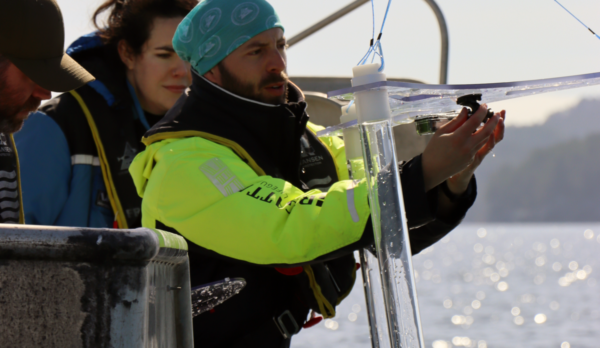Cod larvae are attracted by the noise from offshore wind turbines, a new peer-reviewed study has found.
When offshore wind turbines are operating, they create a constant, low-frequency underwater noise that spreads out from a wind farm.
“We already know that fish and other sea creatures are sensitive to sounds, and that some species react to low-frequency underwater noise”, says Alessandro Cresci, a marine scientist at the Norwegian Institute of Marine Research (IMR). “What we don’t know is how fish, particularly in their early larval life stage, react to the sound of offshore wind turbines.”
In order to learn how cod in the North Sea may react to offshore wind farms, scientists carried out a practical experiment: they recreated the situation in a fjord, albeit on a smaller scale.
“We filmed cod larvae drifting naturally in the water inside transparent acrylic cages with mesh walls. While the cages were drifting in the water, we used a loudspeaker to emit a constant, low-frequency noise at 100 Hz. We wanted to see whether the larvae changed their behaviour”, explained Cresci.
Around 90 cod larvae were tested in the fjord – half were exposed to sound, while the other half were allowed to swim in peace. When they were allowed to swim in peace, the larvae headed towards the northwest. But when exposed to the noise, the cod larvae chose to swim towards it.
“This is one, small-scale experiment, but our results show that cod larvae drifting with the ocean currents past or near to an offshore wind farm may be attracted by the underwater noise from the turbines”, explains the researcher.
Aaron Rice, a bio-acoustician at Cornell University in New York who was not involved with the study, says in Hakai Magazine that the research is useful because it shows that not only can fish larvae hear the sound, but that they’re responding to it by orienting toward it. Rice adds, however, that the underwater noise from real wind turbines is far more complex than the lone 100-Hz sound tested in the study. He says care should be taken in reading too much into the results.
As well as noise pollution, many marine species are also at risk from overfishing, rising ocean temperatures, and other pressures. When trying to decide whether offshore wind power is a net benefit or harm for marine life, says Rice, it’s important to keep these other elements in mind.
Other species to be tested
It is real struggle for cod larvae to survive through to adulthood. Even small changes in their spawning and nursery grounds may affect the stock, and it is useful to know how different activities affect them.
Now the researchers are planning to test other commercially and ecologically important species in the same way.
“It is important to learn more about what impact a new industry like offshore wind power may have on fish and ecosystems.”
Further information:
Photo: IMR, Alessandro Cresci with the chamber used in the experiment.
The full release from the Institute of Marine Research can be read here and the peer-reviewed journal paper in Communications Biology can be read here.
